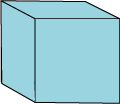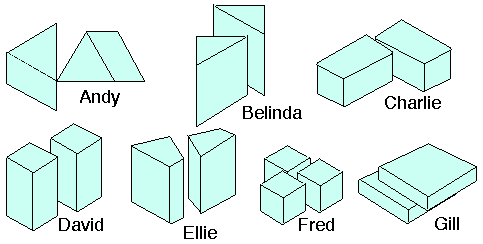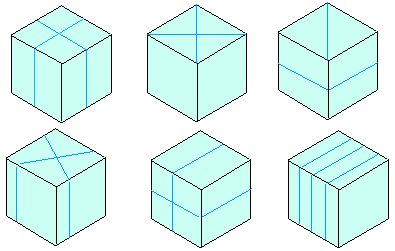Copyright © University of Cambridge. All rights reserved.
'Cubes Cut Into Four Pieces' printed from https://nrich.maths.org/
Show menu
Why do this problem?
This problem requires some visualisation, and knowledge of 3D shapes. It gives children experience of identifying shapes from pictures of them in different positions and orientations.Possible approach
Ideally, it would be good to have some modelling clay/plasticene available for this activity (wooden or plastic 3D shapes might also be useful).
You could start by showing the group a cube of clay and asking them to describe the shape. Ask them to imagine how they could cut the cube into four pieces which are exactly the same size and shape. Give them time to think on their own, then to share their ideas with a partner. You could then give each pair their own cube of clay and invite them to test out their cuts.
Gather all the cut cubes together to compare the different cuts, encouraging the children to talk about what they notice. You may find that some pairs have not got four pieces, some may have differently-shaped or differently-sized pieces and so this will promote much discussion.
From there, you can introduce the problem as it is written, showing the group the pictures of the children's pieces. You may find this sheet useful which has each picture as a separate card so pupils can match the picture of the cut cubes to each
child's pieces. It may be helpful to have more cubes of clay available in case it is necessary to re-create some of the cuts in the problem.
Key questions
Which cube do you think that shape came from?
How would you cut a cube to make that shape?


